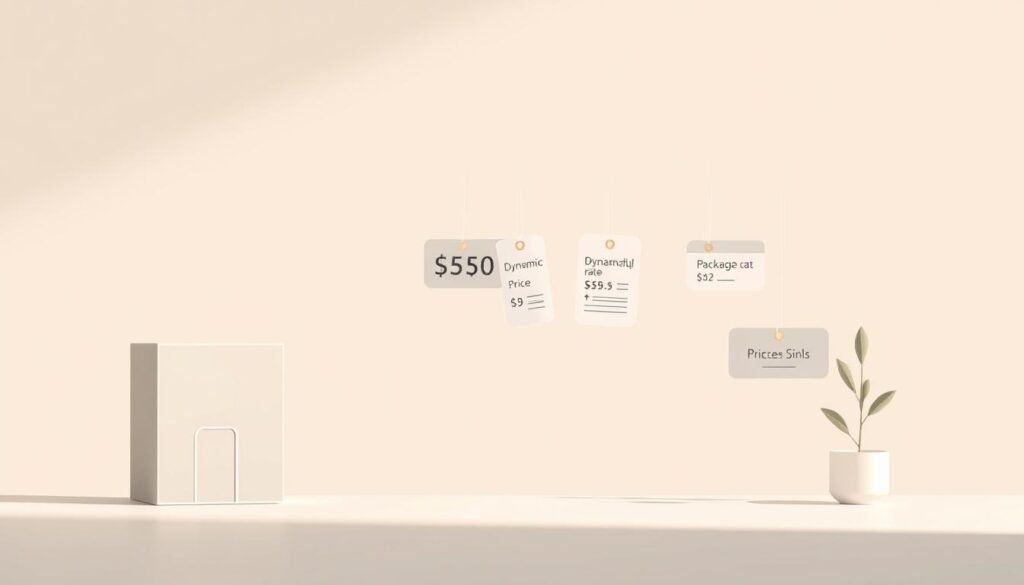HOME / SINGLE POST

Did you know that an empty room tonight equals lost income forever? That simple fact shapes how we sell rooms and set price points.
We write as guides to help independent UK properties protect income and boost occupancy with a clear, practical plan. Our approach centres on segmentation, demand forecasting, pricing tactics and channel work—kept simple and actionable.
Dynamic pricing tools now give AI-driven suggestions across the year, pulling historic and real-time signals so we can react fast to school holidays, events and weather swings. We blend tech with easy marketing, guest care and straightforward rate windows.
In short, we aim to lift hotel revenue without a big team or complex dashboards. Read on and we’ll share step-by-step moves that make pricing decisions faster and bookings steadier.
Small UK properties can outsmart larger chains by reacting faster to local booking signals. The internet makes price checks instant, so a clear plan keeps us visible and competitive.
Independent hoteliers can win quick gains by using core principles: market segmentation, demand forecasting, pricing strategies and smart distribution. We do this without heavy tech—simple data like pickup pace, cancellations and competitor prices tells us when to act.
Dynamic pricing tools use historic patterns, current bookings and local events to spot shifts in demand. That lets us change rates or length-of-stay rules fast, capture last-minute business and protect higher-value stays.
In short, these are practical opportunities: targeted offers, parity-safe perks and flexible rate windows that lift hotel revenue without starting a damaging price race. Our guide will give weekly steps you can follow to get steady bookings and smoother operations.
We sell nights by matching each room to the guest who values it most—at the time and price that work. In plain terms, hotel revenue management means putting the right product in front of the right guest, via the channel that returns the most.
Rooms are perishable — an unsold night is gone. That simple fact forces us to price using remaining rooms, current bookings and recent cancellations.
The demand curve is predictable: higher rates usually reduce bookings; lower rates boost them. We use past results, competitor rates and a local events calendar to forecast which dates will fill and which need a push.
Practical points:
Small, frequent adjustments beat big last‑minute swings. These basics feed forecasting, segmentation, pricing tactics and channel work that follow in the guide.
We start by mapping the local scene so every pricing move has context. A short, shared view of demand makes daily choices clearer and faster.
Choose a live compset that truly matches location, room type and service level. Check one or two close neighbours and one aspirational property.
Monitor competitor prices by date. Spot spikes and windows where a small change frees up bookings.
List what moves local demand: stadium fixtures, festivals, conference weeks, school holidays and sudden warm spells. Include flight search trends and day-of-week patterns.
Profile our guests in plain terms — why they come, when they book and what they value. Capture this in a team playbook so every staff member knows the plan.
Weekly market checks (ten minutes) keep our management focus sharp. Better awareness gives steadier revenue and fewer last‑minute discounts.
Predicting demand gets simpler when we combine past results with live signals. We begin with last year’s occupancy, ADR and pickup pace. Then we layer current bookings and cancellations to see momentum by date.
Historic data shows patterns. Live indicators show shifts. We check competitor rates and recent booking speed to spot early signs.
Events, weather and flight searches can change demand fast. A concert or a sunny weekend often brings late bookings and firmer pricing.
Sketch a simple curve for each key date and set price bands as rooms sell. Use triggers: if pickup beats last year by X rooms, raise rates by £Y.
“Short weekly checks let us act in time, not after the peak has passed.”
| Scenario | Signal | Action |
|---|---|---|
| Shoulder date | Slow pickup | Offer gentle value, open longer LOS |
| Peak event | Spike in searches | Protect rates, upsell upgrades |
| Late surge | Weather / concert | Raise rates, tighten availability |
Knowing who books and why lets us match pricing, policies and add-ons to real guest needs. Segmentation divides customers by willingness to pay and likely in‑house spend, so each offer feels fair and boosts in‑stay income.
We sketch simple personas — corporate regulars, leisure couples, families and event-goers — then add quick notes: lead time, spend patterns and flexibility needs.
Example: a US couple booking months ahead values bundles and romantic extras. A London business traveller booking late values speed and flexible check‑in.
Match policies to willingness to pay. Offer more flexible cancellation for late corporate demand and advanced non‑refundable bundles for early bookers.
“Fewer, clearer rates that map to real guest needs beat a maze of options that confuse everyone.”

We use simple, timely rules to set rates that match demand and guest timing. This keeps our offers clear and helps the team act fast.
Dynamic pricing reacts to demand, competitor moves, booking lead time and guest behaviour. Small, frequent adjustments usually outperform rigid price lists.
Fixed pricing can be easier, but it risks missed opportunities when demand shifts fast.
When many rooms remain, we price slightly below similar competitors to win share. When only a few rooms are left, we hold higher and push upgrades.
We set clear lead-time rules: advance-purchase deals for planners; higher flexible rates for last-minute business bookings.
In softer markets we make modest price moves and add-packages—not deep cuts. This wins guests while protecting perceived quality.
Clean rate fences and consistent messaging keep offers transparent. We set simple floors and ceilings by date so our team never undercuts the brand.
“Measure pickup, ADR and occupancy weekly and tweak the plan.”
| Situation | Signal | Recommended action |
|---|---|---|
| Low demand window | Slow bookings | Introduce advance-purchase value, promote packages |
| Rising demand | Faster pickup than last year | Raise rates, reduce discounts |
| Late surge | Short lead-time spikes | Tighten availability, upsell add-ons |
A clear channel plan spreads risk and keeps our margins healthy across peaks and quiet weeks. We pick channels to balance reach and profit, then tweak that mix by season and event.
We use Brand.com to protect margin and OTAs to widen reach. Wholesalers and aggregators hedge weak windows with bulk business.
Keep parity sensible: allow targeted promotions but avoid public undercutting that erodes trust.
We keep a live compset and events calendar so pricing and availability match local demand. This helps us spot opportunities and act fast.
“Spread risk, protect margin and let each channel play the role it suits best.”
Clear rules on public pricing stop accidental undercuts and preserve our channel strength. Rate parity means public rates must match across OTAs and our site, or an OTA may lower our visibility.
How parity works across OTAs and your website
Public rates should be equal on each sales channel to avoid penalties. OTAs check prices by date and may reduce ranking when they find lower public rates elsewhere.
Private offers, loyalty and codes to segment legally
We can still reward guests without breaking parity. Lower rates are fine when hidden behind a login, via loyalty programmes or with unique promo codes.
Small properties face different trade‑offs when guests change plans at short notice. A single forecast error can create a walk situation that harms reviews and costs us more than a lost night.
We track cancellation patterns by date and by segment so we can set flexible pricing that reflects real cost. This helps us decide when to sell a non‑refundable offer and when to keep a flexible booking.
Our rules are simple. We set clear free‑cancellation cut‑offs that match lead time and demand. We keep a small waitlist and send firm pre‑arrival reminders to reduce no‑shows.
We review impacts monthly — occupancy, ADR and guest sentiment — then tweak the approach. This keeps pricing fair, protects our revenue and keeps the hotel running smoothly under real‑world pressure.
Selling more to guests starts with timing — pre-arrival nudges and friendly on‑site suggestions win most of the time.
Pre-arrival and on-property offers should feel helpful, not pushy. We send a short email before arrival that lists upgrades, breakfast bundles and late checkout. Each offer links to a one‑click purchase so guests add value quickly.
At check‑in our team suggests relevant options: a higher room category, parking or a dining package. Small touches — a welcome drink or a guaranteed view — lift in‑stay spend and create memorable moments.
If on-site amenities are limited, we partner with nearby spas, guides and restaurants. This widens what we can sell without extra overhead and creates attractive packages for travel plans.
“Great extras create memorable stays, drive positive word of mouth and support higher base rates.”
Good marketing turns curious searchers into confident bookers by showing what makes our place special.
Strong reviews raise visibility and let us hold firmer prices on busy nights. We thank positive guests quickly and fix problems raised in negative notes.
Reply promptly and use feedback to improve rooms, breakfast and welcome touches. Better scores support stronger pricing and higher average spend.
Ensure the website shows live availability and clear Book now calls. Fast pages and honest photos convert more booking traffic into stays.
Refresh OTA profiles with accurate amenities, local highlights and up‑to‑date photos so the extra traffic converts at a higher rate.
We use email to target past guests with parity-safe offers that match their travel patterns. Paid campaigns are reserved for opens, post-renovation pushes or quiet weeks where extra reach matters.
“Keep the message consistent—value, warmth and clarity—so guests trust us across channels.”
| Focus | Action | Metric |
|---|---|---|
| Reviews | Reply within 48 hours; act on issues | Average rating, review count |
| Website | Live rates, fast checkout, clear CTA | Direct share, conversion rate |
| Email & campaigns | Targeted sends; measured spend | AOV, bookings from list |

Lightweight tools now let us automate daily pricing decisions without losing local insight. We pair simple software with our team knowledge so actions stay fast and sensible.
How it works: the tool combines historic performance, current pickup and forward-looking signals—flight searches and local events—to suggest daily pricing. These AI suggestions cover a full 365‑day horizon so we spot opportunities early.
Look for software with a flexible compset, a custom pricing calendar and a live events feed. Two‑way PMS integration is vital—rates and restrictions push and pull automatically, cutting errors and manual updates.
We tailor floors, ceilings and sensitivity so the technology reflects our brand and market position. The tool shows why a price moved, which builds team confidence and helps us learn.
“Treat technology as a guide, not a replacement—our market feel plus software speed creates the best outcomes.”
| Feature | Benefit | What to check |
|---|---|---|
| 365‑day view | Spot long lead-time opportunities | Rolling forecast accuracy |
| Flexible compset | Relevant market comparisons | Easy add/remove properties |
| Events calendar | Capture local demand spikes | Live updates, importable feeds |
| Two‑way PMS | Less manual work, fewer errors | Push/pull rates and restrictions |
| Transparency tools | Team learning and trust | Logs explaining price moves |
Our approach: use software to reduce spreadsheets, free time for service and run weekly reviews to align settings with local news. This keeps occupancy and average rate growth controlled and human-led.
Effective hotel practice ties simple routines to quick action—this is how independent properties win.
In short, know your market, profile guests, forecast demand and set clear price and channel rules. Use light tech—events calendars, flexible compsets and PMS links—to spot trends and move in time.
We keep the focus on operations and guest care so better planning lifts occupancy and supports firmer prices. Test regularly: set goals, watch occupancy and ADR, then adjust calmly as the market shifts.
Next step: add an events calendar, choose simple software, define your compset and run your first weekly pricing review. Local insight and steady routines keep your property resilient in any UK market.
Never miss any important news. Subscribe to our newsletter.